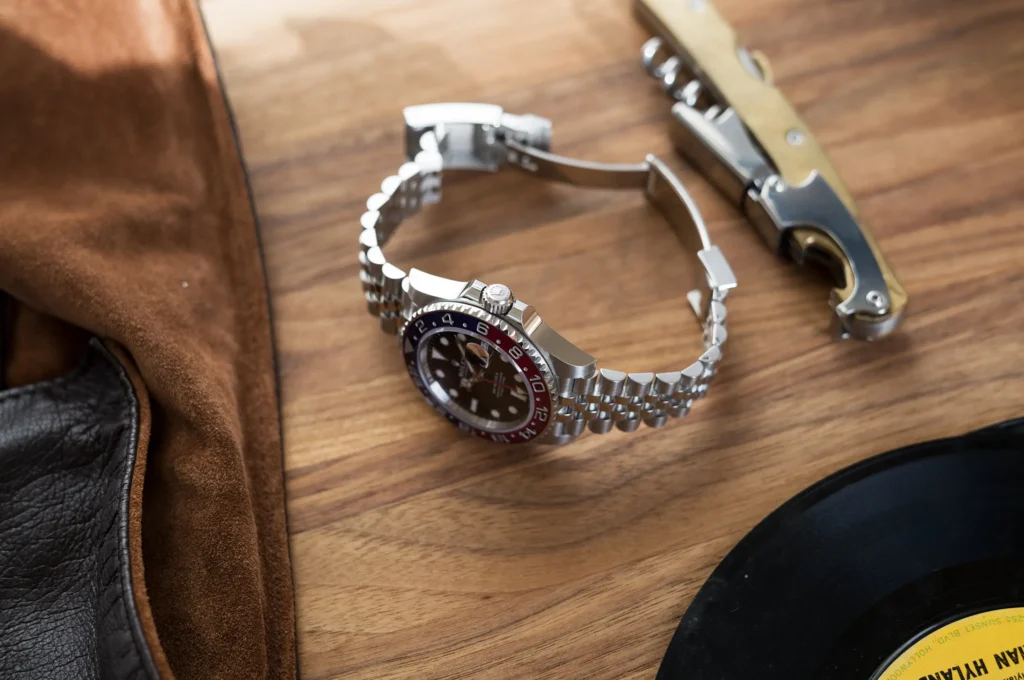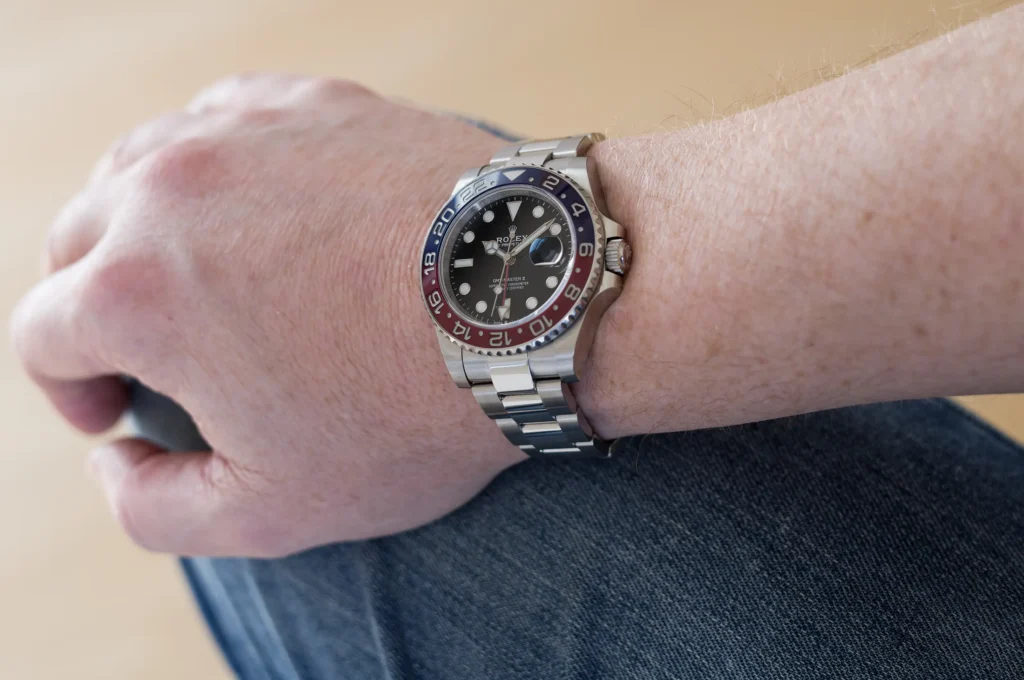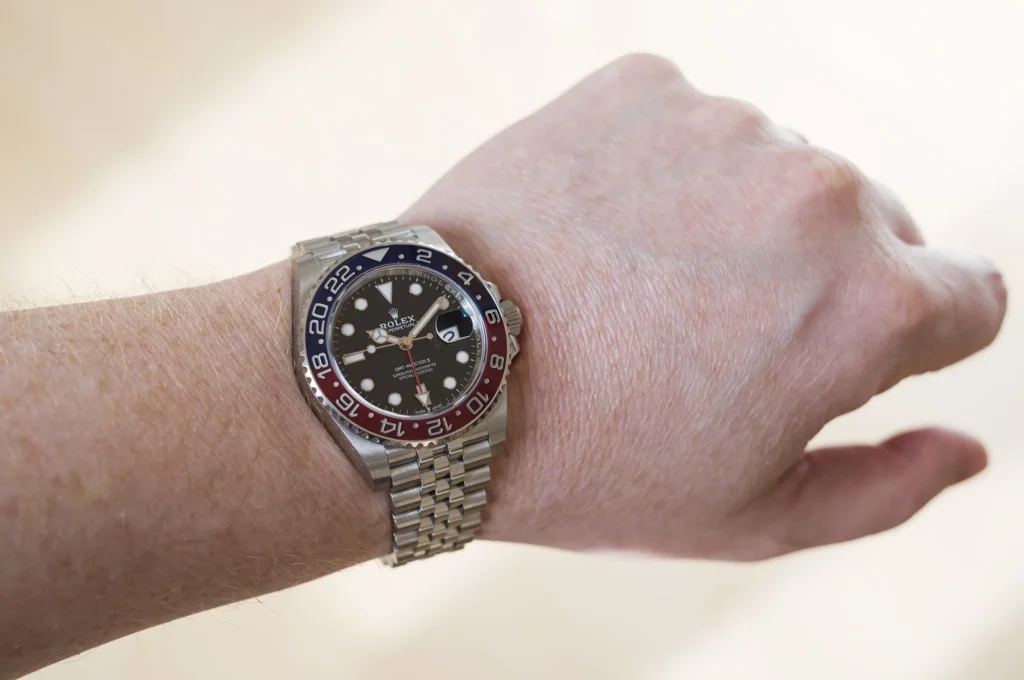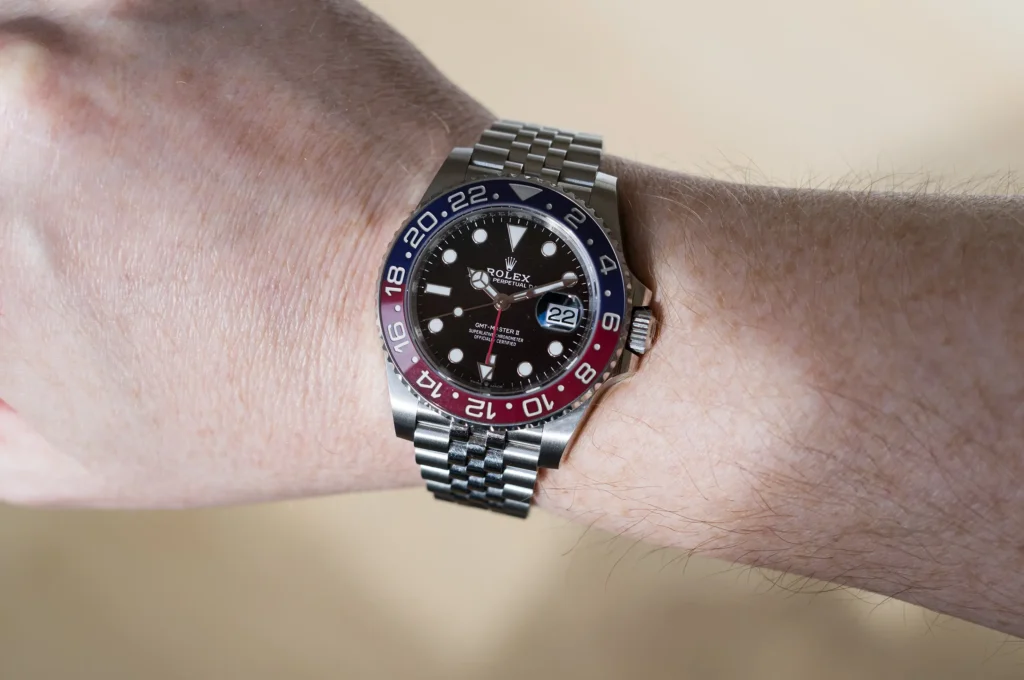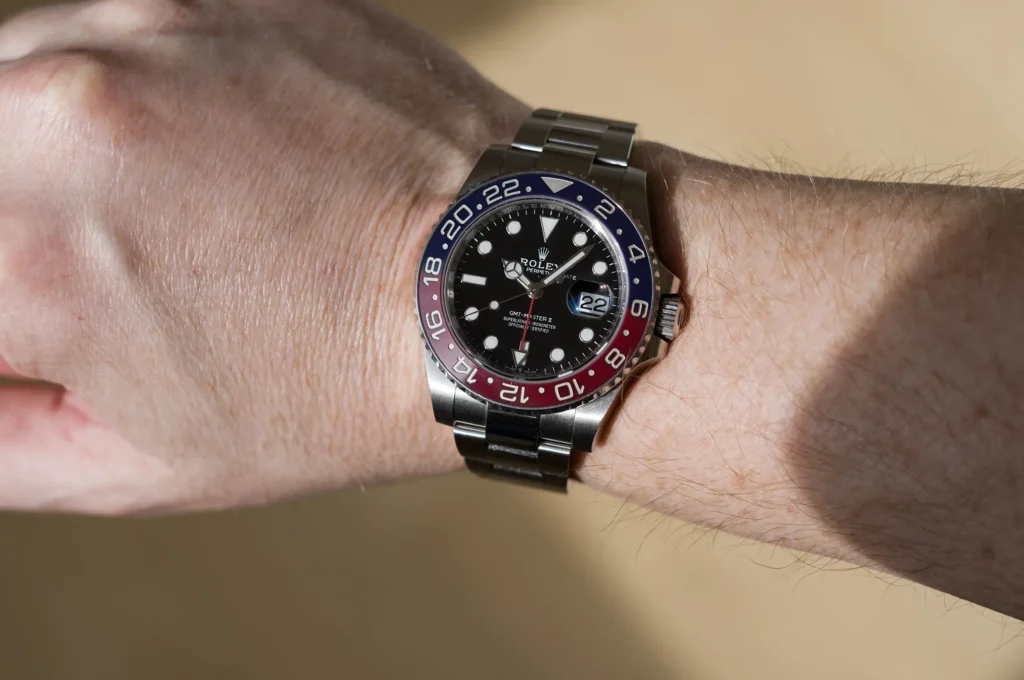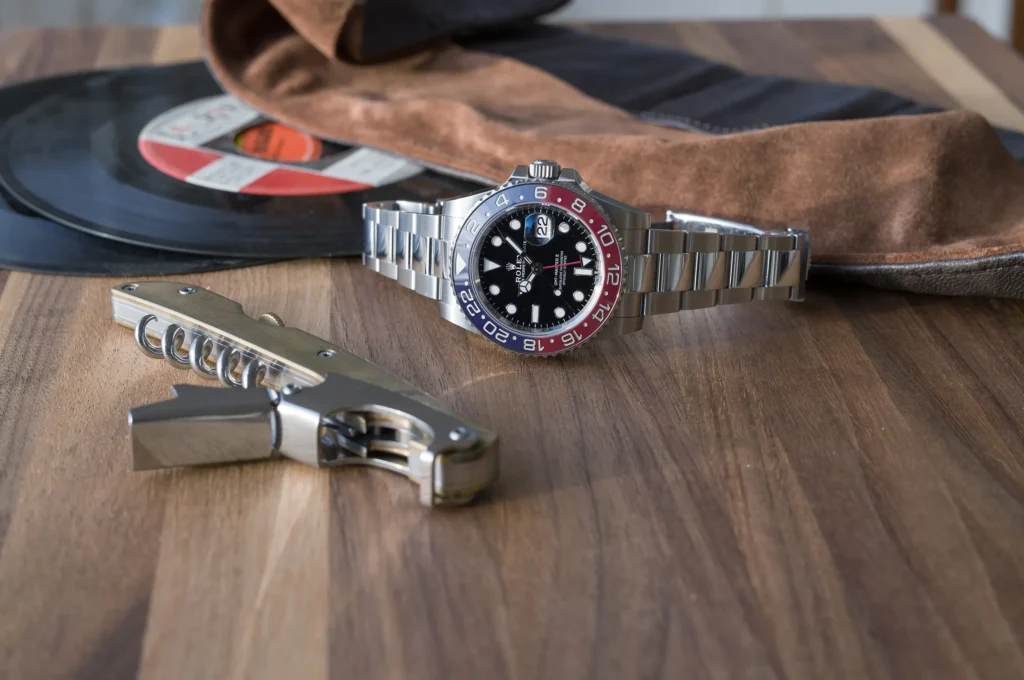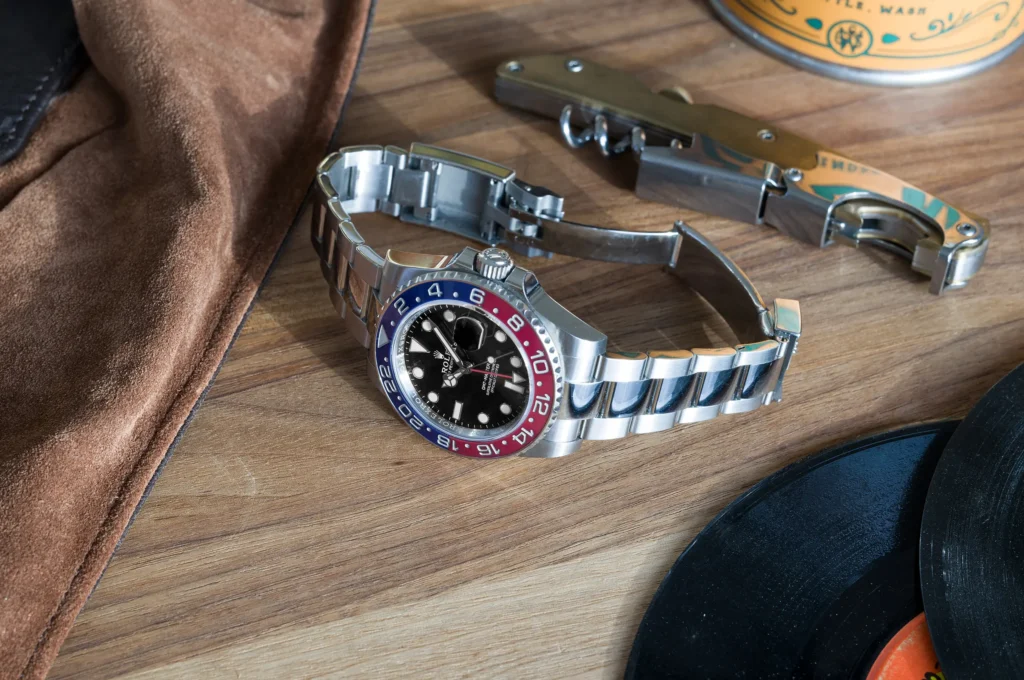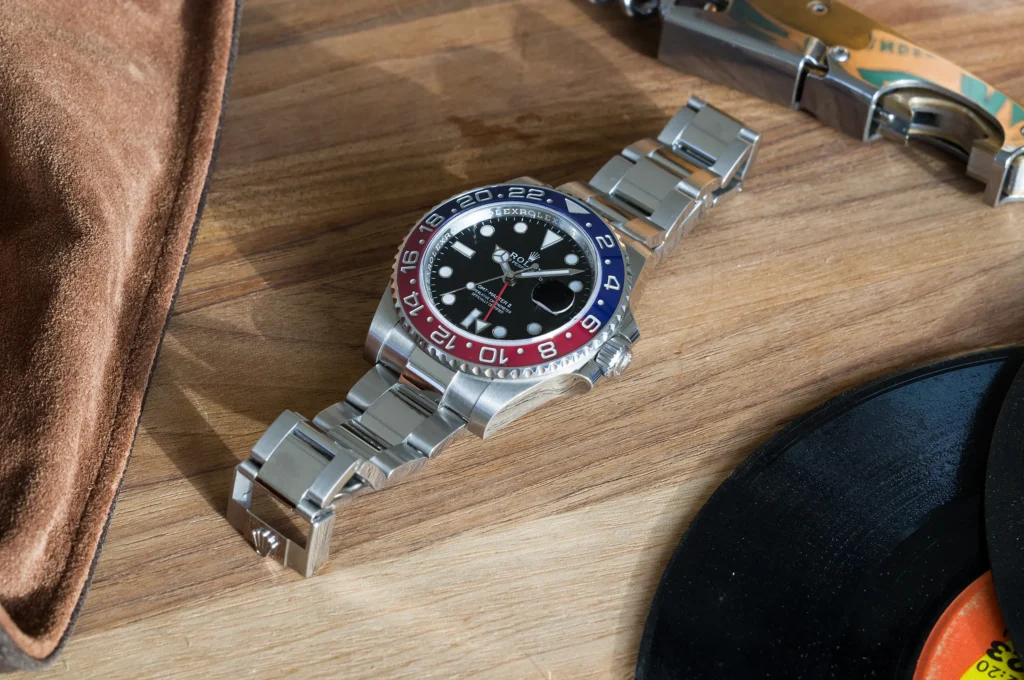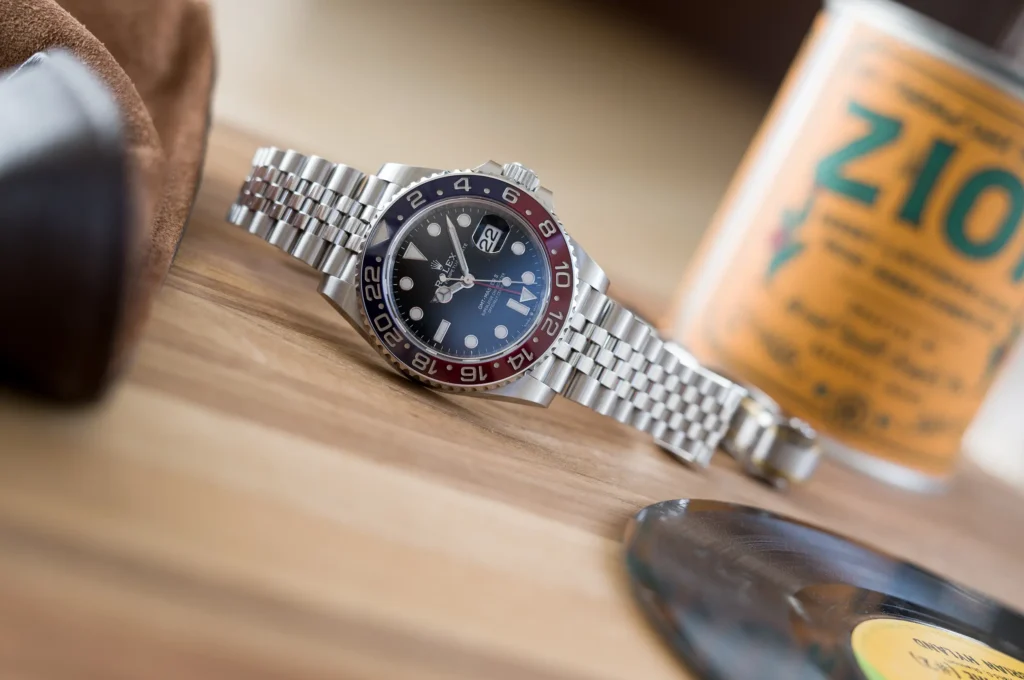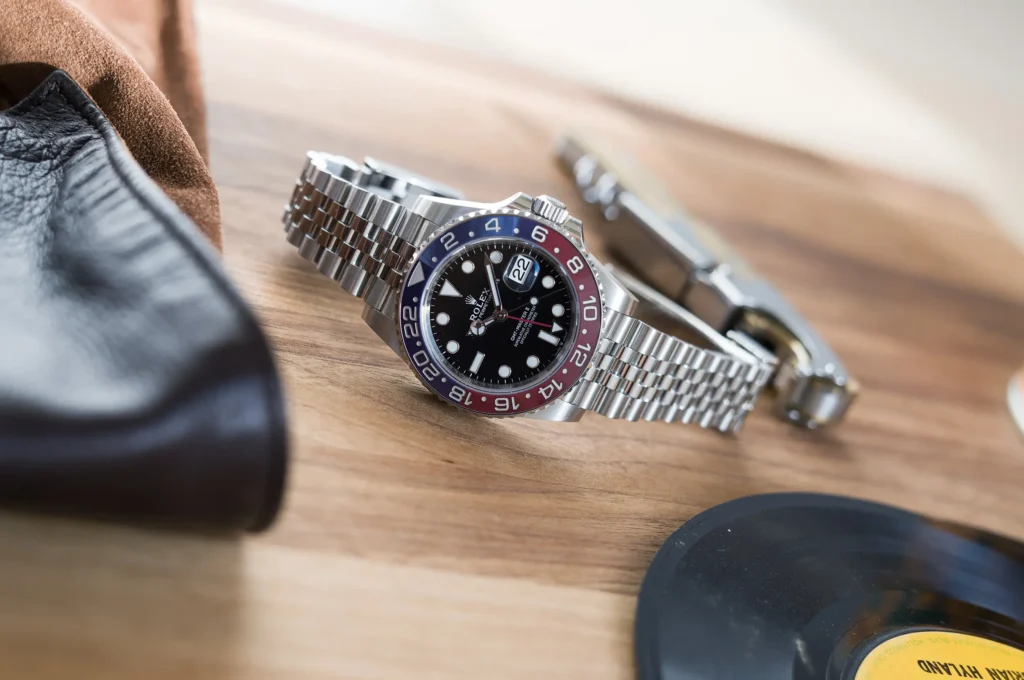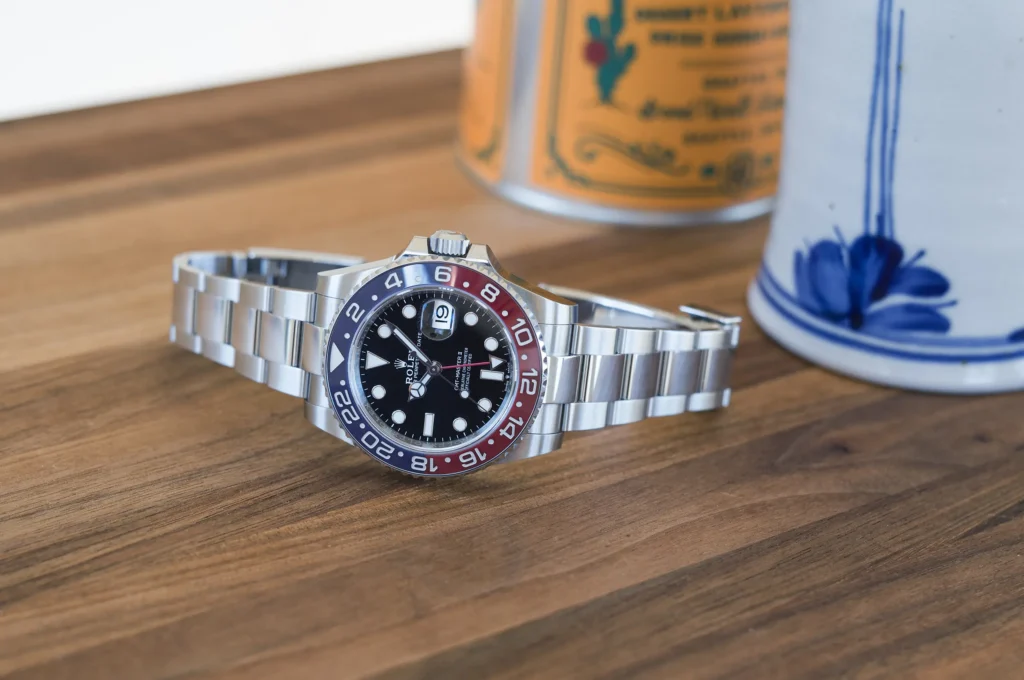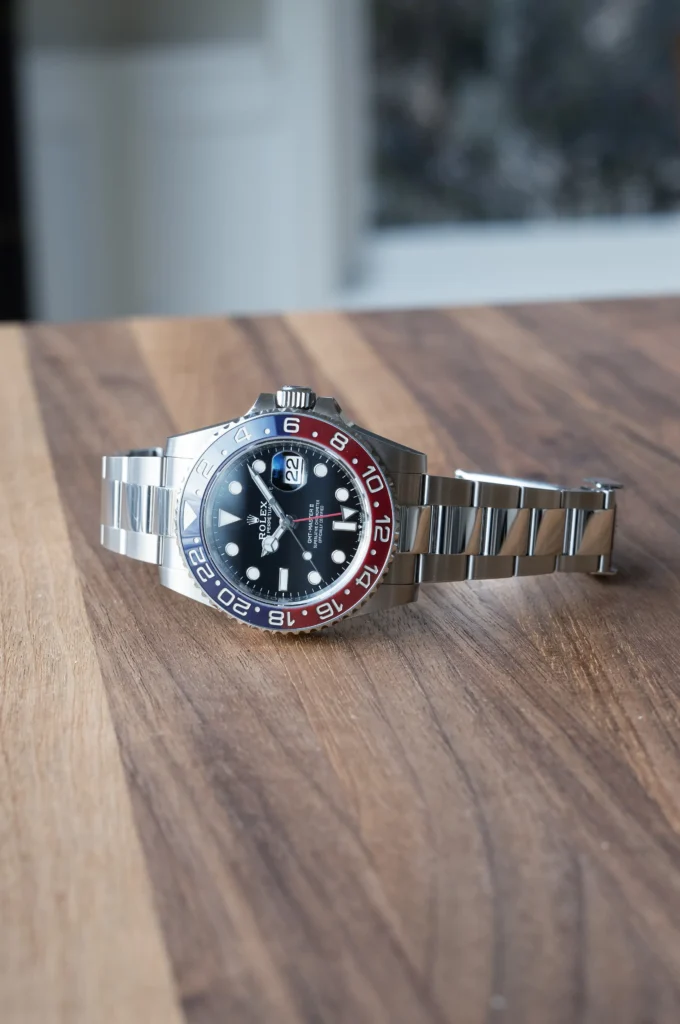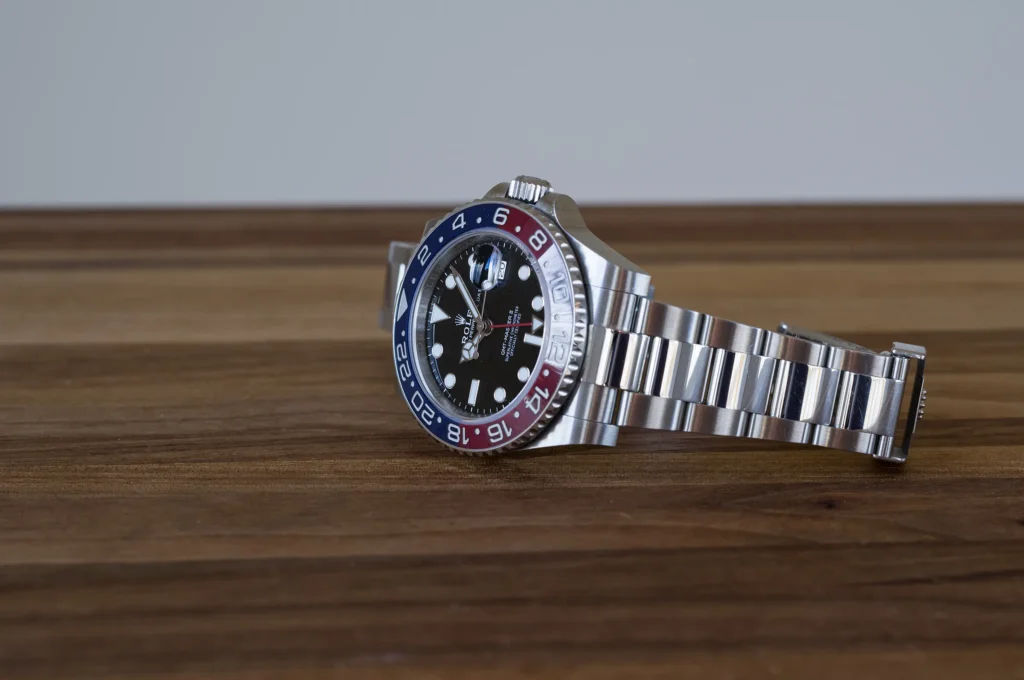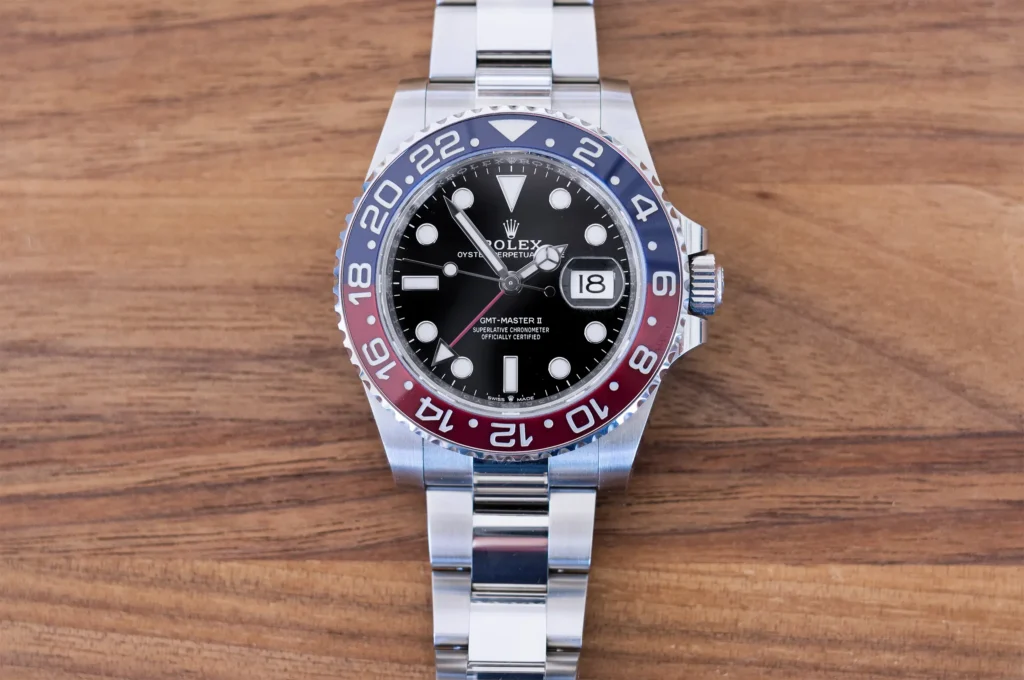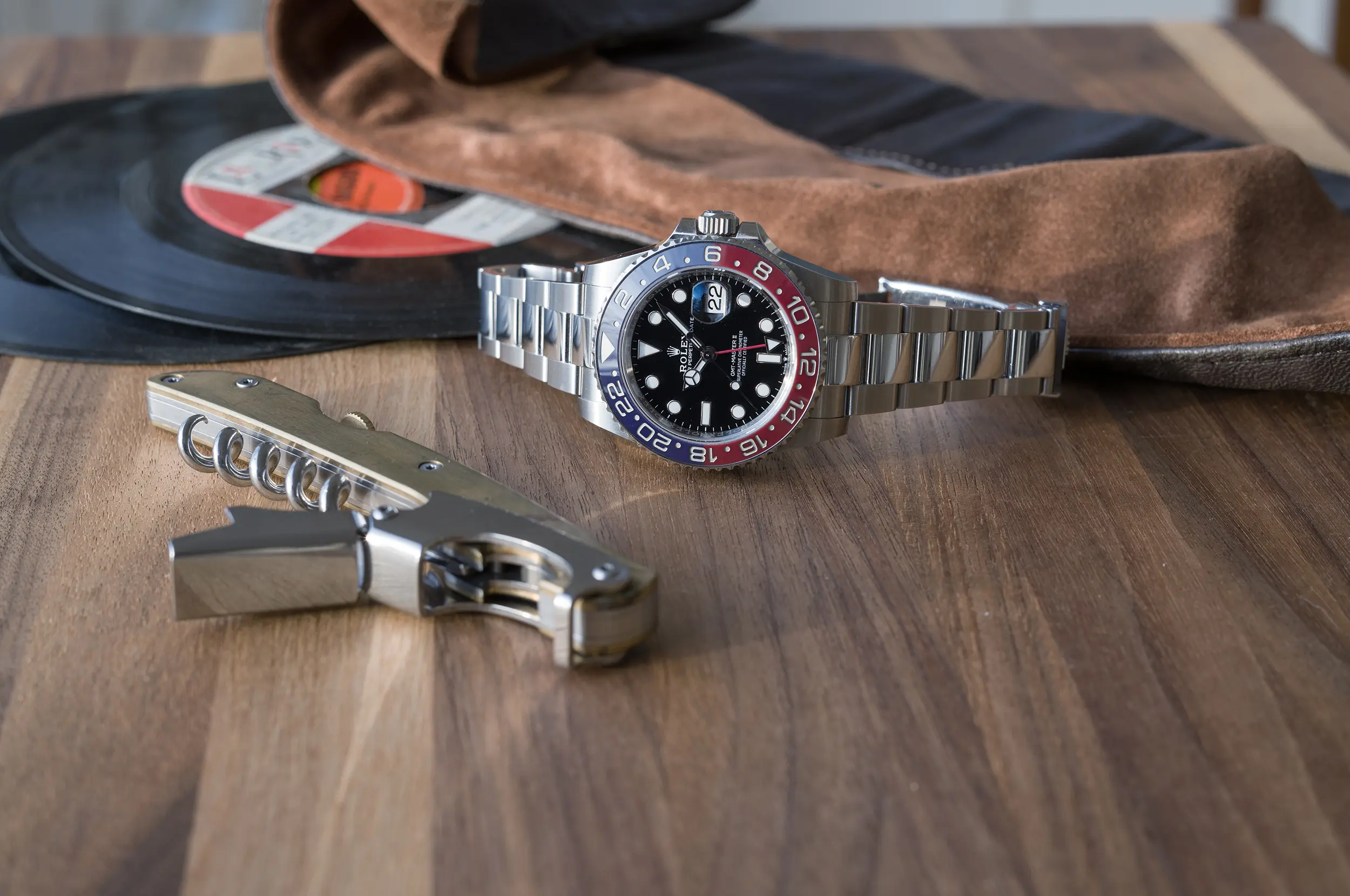Watches & Wonders 2024 is nearly upon us, meaning the rumor mill is in full swing about what we might see released from the participating brands. For one watch in particular, however, rumors have been swirling for months, and that is the 126710BLRO, the so-called ‘Pepsi’ GMT from Rolex. This specific pair of colors has been notoriously inconsistent when rendered in Cerachrom, leading many to speculate that Rolex will reserve them for precious metal references only, or even ax its production altogether. Rolex famously holds their cards pretty close to the vest so we’re unlikely to know what, if anything, will happen to the Pepsi bezel until April 9th, when the show begins. This is the Rolex GMT-Master II 126710BLRO.
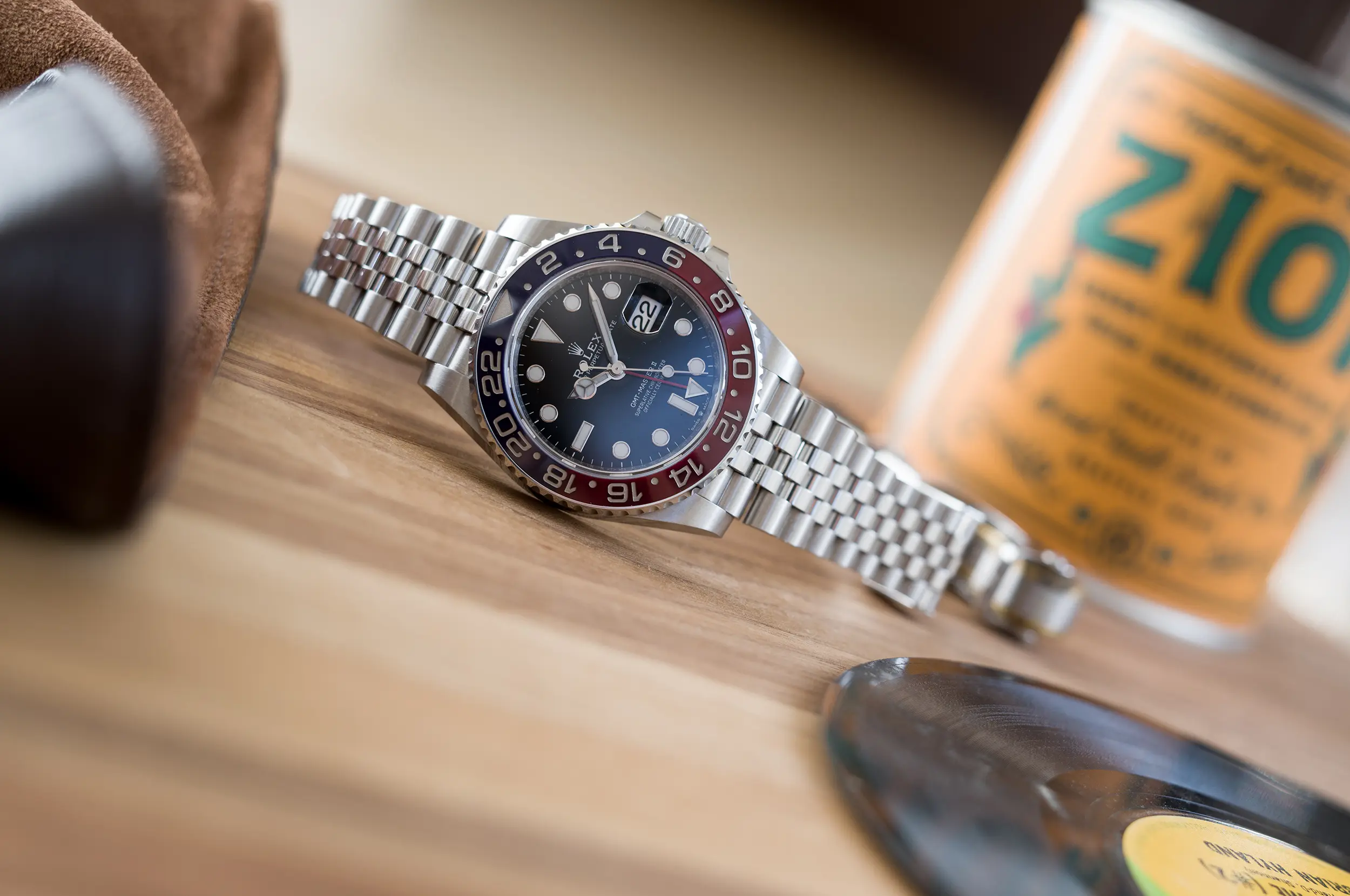
2024 marks 10 years since Rolex re-introduced their iconic ‘Pepsi’ bezel in the form of a Cerachrom insert within the white gold 116719BLRO. The colorway had been absent since the 16710 went out of production, along with its aluminum insert, in the mid-aughts. The ceramic rendition of the lauded blue and rouge bezel would eventually make its way into the steel reference 126710 in 2018, where it has since struggled to find consistency in appearance. How Rolex manufactures their ceramic bezels as monobloc pieces plays a large role here. More on that later.
Adding fuel to these flames is a recently published patent filed by Rolex in July of 2022 suggesting that a ceramic bezel in black and red bezel may be in the works, bringing back the classic colorway last seen in aluminum form within the 16710 generation. The patent underlying these rumors describes a new process by which color can be manipulated within specific zones during the heat treatment phase of production. Specifically “ranging from bright red to orange.”
The discovery of this patent has many asking just how much more room there is within the GMT-Master II collection for additional colorways, given the rate at which they’ve been added in recent years. The line has seen consistent updates, most recently with a pair featuring a GRNR (GRey NoiR) bezel, and the year prior giving us the left handed VTNR (VerT NoiR). It would appear that Rolex has little issue in producing a broad range of colors (they appear in other collections, as well), save for the color red.
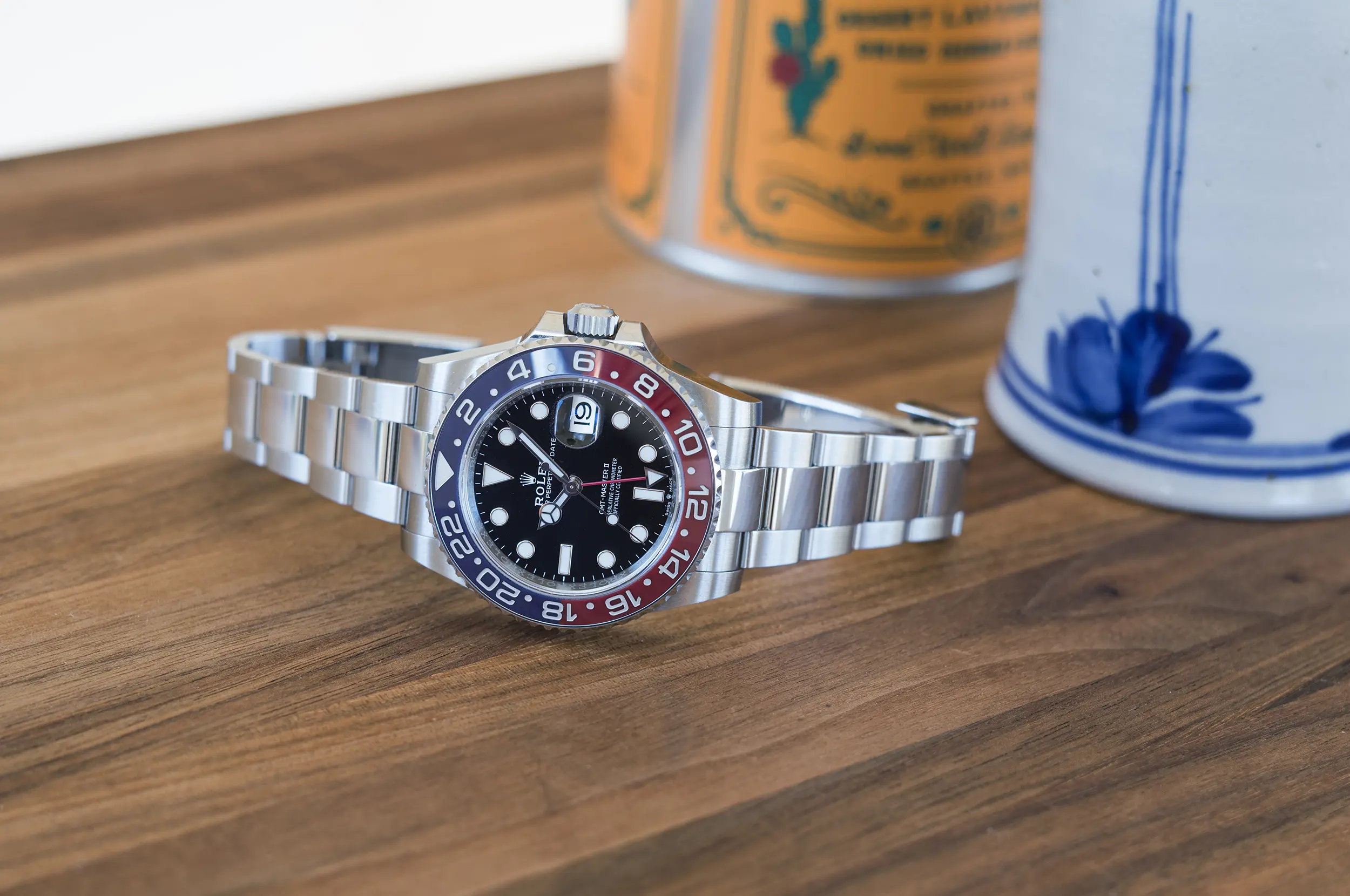
Since its introduction, the ceramic bezel in BLRO (BLue ROuge) has appeared to receive rather consistent tweaks that would lead us to believe that Rolex have been attempting to further dial in the combination to their liking. The white gold 116719BLRO that appeared in 2014 was the first instance of a serially produced red ceramic bezel in the market, and it is, to this day, just that: a red ceramic bezel. The blue half only becomes blue just before the sintering process, when half the bezel is treated with an aqueous solution containing cobalt. The amount of this solution added determines the opacity. This seems to be the step that’s presented issues.
The highly anticipated first appearance of a BLRO ceramic bezel in 2014 was met with excitement, mostly at the prospect of a steel reference down the line, but also with a few raised eyebrows due to the color of the top half of the bezel. The blue had warm, near pastel tones that pushed it slightly toward the purple end of the spectrum. This was a result of the manufacturing process mentioned above, and Rolex would spend the next years making fine adjustments here in an attempt to get the blue where they (and we) wanted it.
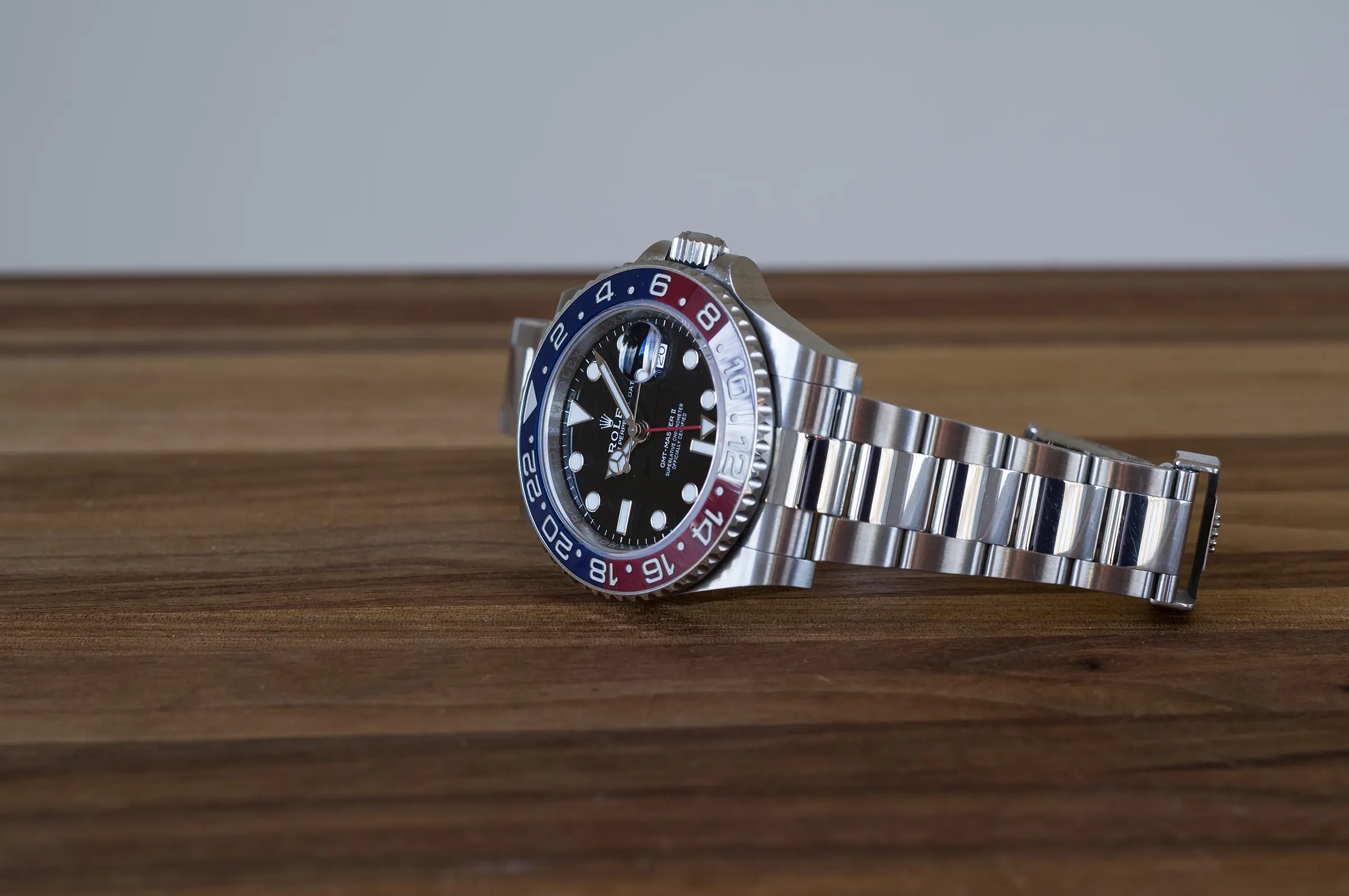
Even by the time a steel BLRO appeared in 2018, the colors were still not in a stable place, with each year getting slight variations that some enthusiasts began to distinguish as Mk I, Mk II, and so on. Truth be told, it’s a subtle evolution that has seen the blue range from light, near purple, to dark and rich, nearer to navy in the later references. It has never hit the rich, vibrant notes that we observe on the blue section of the BLNR.
As stated, red ceramic has been a tricky nut to crack. While their base black bezels use a zirconium-oxide, the BLRO is unique in that it starts with an aluminum-oxide with chromium oxide, magnesium oxide, and a rare earth oxide compound. Alumina has a lower density, while zirconium has more wear resistance and is often used in applications such as bearing balls and ceramic parts in valves and pumps. This change was required to facilitate the red color achieved after sintering (alumina mixed with chromium oxide).
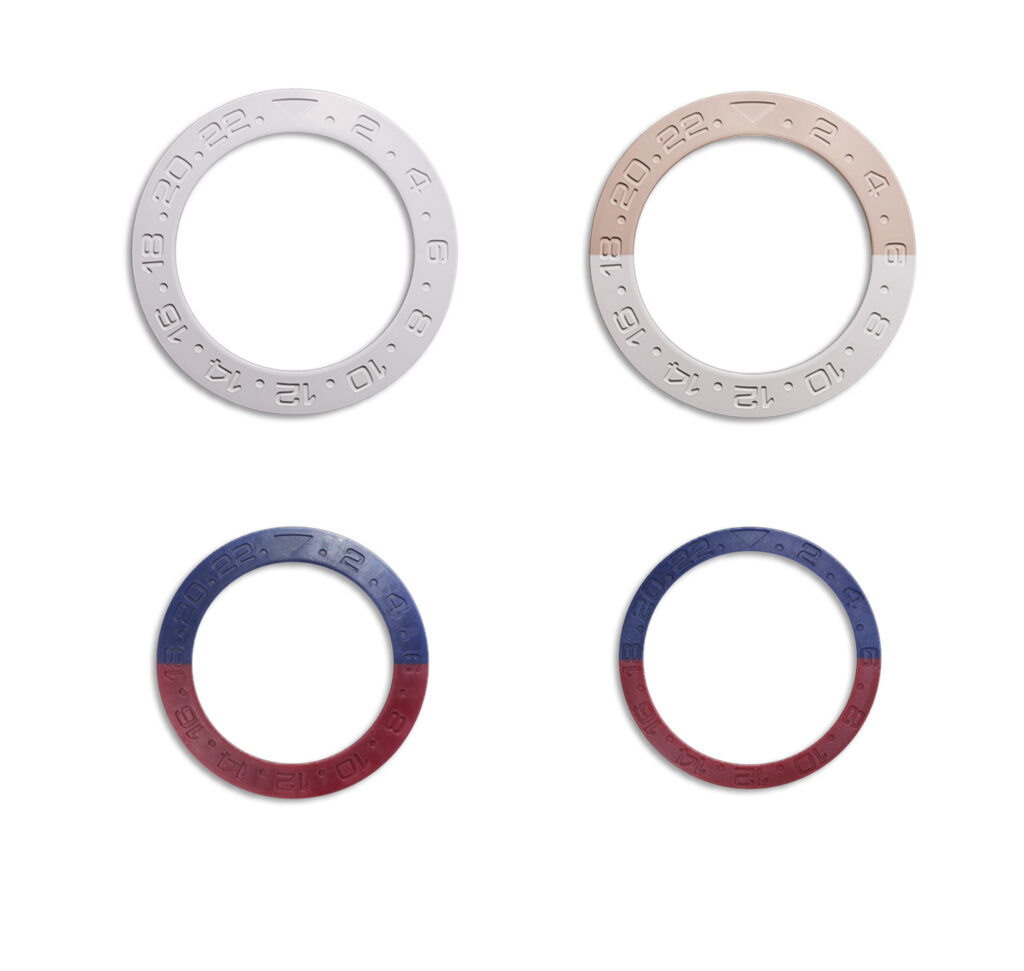
Let’s pause here to recognize the irony of the situation in which Rolex have found themselves. The move to a ceramic bezel was in large part due to the fact that its color would remain brilliant throughout its lifespan. It would not age and degrade in the same manner that the older aluminum inserts would (much to the chagrin of some enthusiasts). While true, the fact that those colors aren’t quite the perfect shades of red and blue that are being locked in for eternity goes against the move to ceramic on a philosophical level.
The patent that Rolex filed last year outlines a new process by which color is added to the base red compound, and at a glance it may only pertain to creating the black upper component, but it’s a curious move that could have implications as to how they achieve blue in the future. Even the latest BLRO watches being sold today aren’t quite the vibrant blue you might expect. That said, they could be seen as true to the original bakelite bezel of the original GMT reference, the 6542. I don’t believe the intent was ever to create a bright blue, but rather a rich, high contrast blue against a deep red. In that sense, the latest examples found on recently produced references are close, but veer a touch to the dark side, with only small hints of blue in all but the most direct of light.
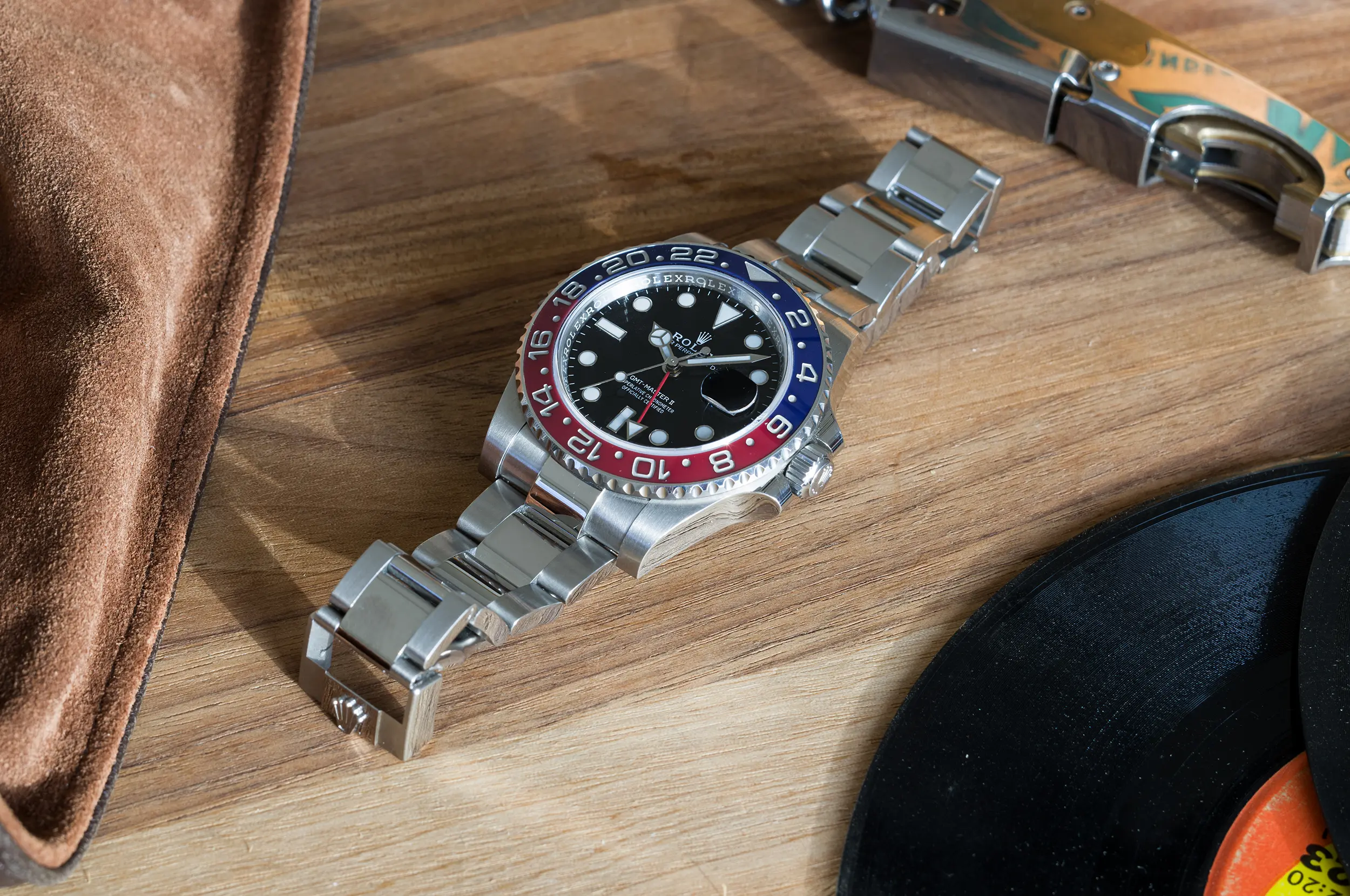
If this is all sounding a bit deep in the weeds, you’re probably right. Long time Rolex enthusiasts will attest that digging into the minutiae of how these watches and their constituent parts are made is nothing new. In fact, an argument could be made that the inconsistencies in the production of these bezels isn’t that far off of something like categorizing the dial characteristics of the 1680 ‘red’, for instance, which has 6 recognized variations (not including service dials) that can be pinned to certain production dates, all as determined by the community of enthusiasts.
Many Rolex references produced from the mid ‘50s to the ‘80s paint an interesting picture of the brand finding its modern identity through their sport watches. It’s fallen on the community to help bring focus to this picture, as Rolex does not, as of yet, have things like a museum or archival extracts, or really even much interaction at all with collectors behind these efforts. But the detective work and resulting knowledge base do have an upside.
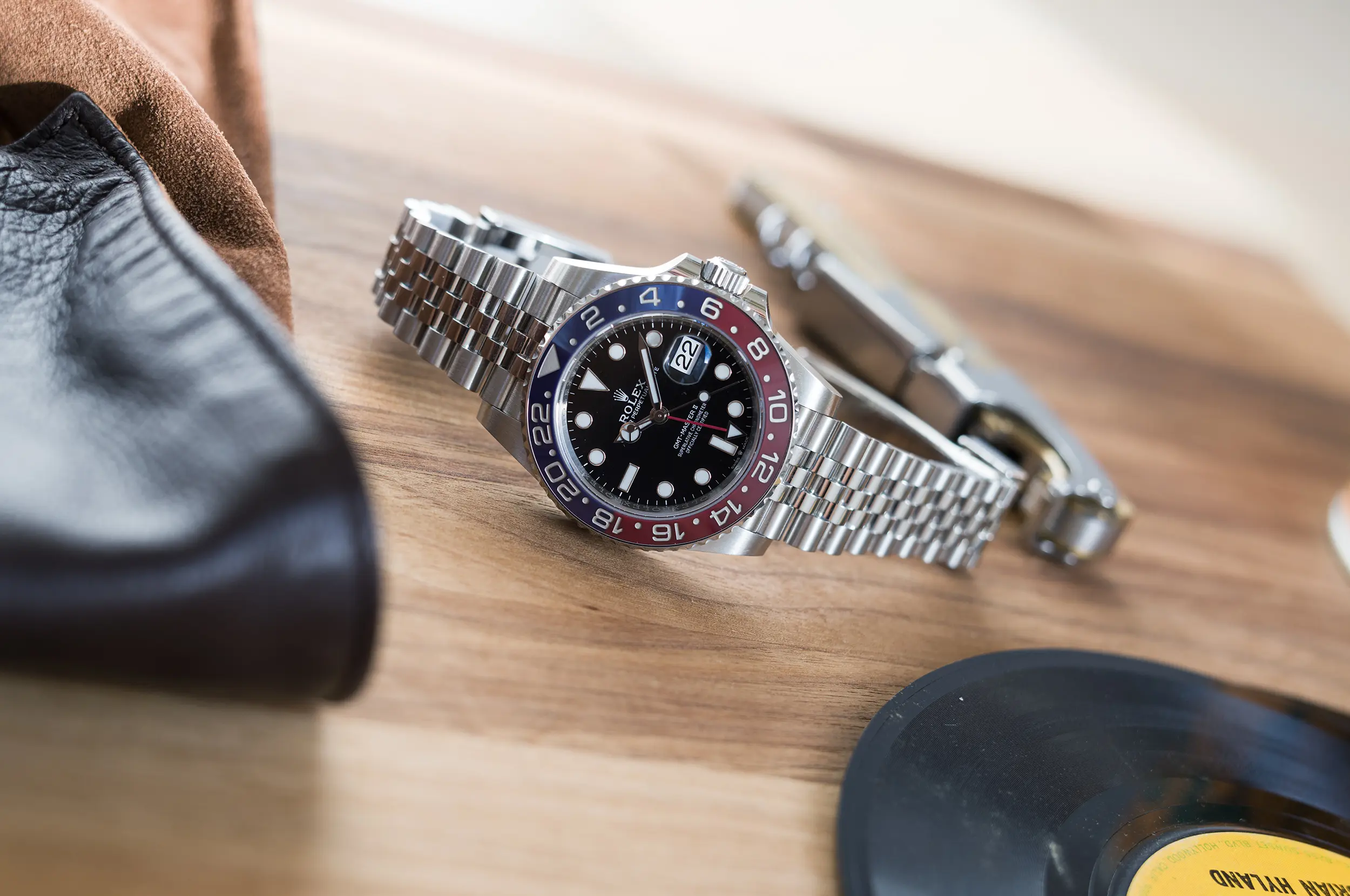
This community based research has served as a binding agent for those curious, and formed the early building blocks of the online communities we enjoy today. What was once done out of curiosity and the desire to document the history of these watches in a more personal way, has turned into a trove of data used to identify authentic dials and configurations as the values of these watches have escalated over the years.
These rabbit holes of research are responsible for pulling many of us deeper into the hobby. An initial passing curiosity in a vintage Sub has an interesting way of evolving into all-night binging on the development of the Sea-Dweller, the SEA LAB project, Scott Carpenter, James Bond, Steve McQueen… these are the countless stories that serve as the strong foundation of the Rolex brand that many of us fell in love with, and it’s through this (rose colored) lens that many still view the brand today. The development of the GMT-Master is another long chapter in that story, and one that is still unfolding today.
The Rolex GMT-Master II 126710BLRO
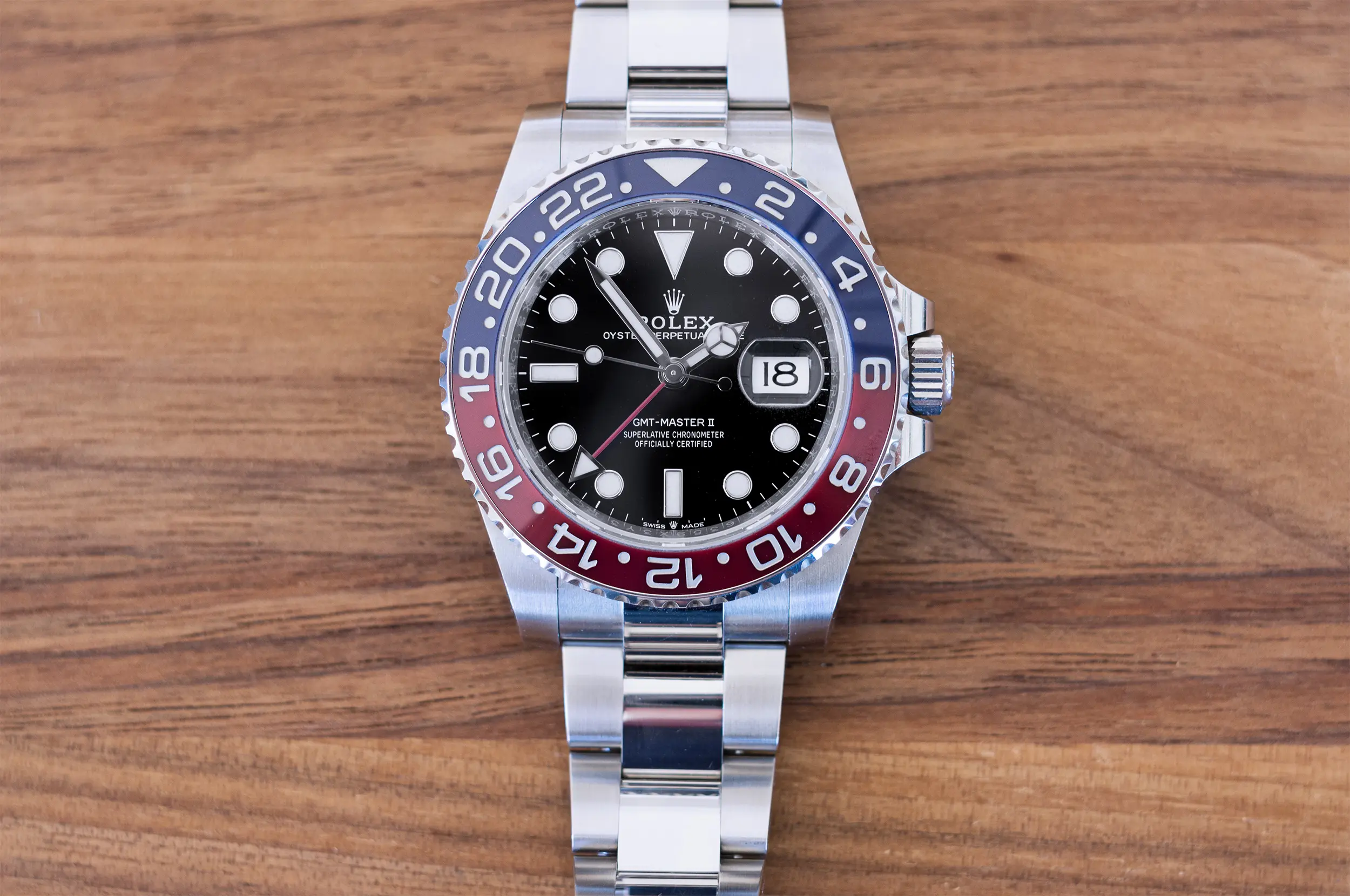
The modern GMT-Master II reference 126710BLRO is a clear evolution of the concept first introduced in 1955 at the behest of Pan-Am. A GMT built around the bones of their still forming sports watch identity. The colorful bezel that served to visually represent night and day on a 24 hour scale was distinctive and easy to latch on to. This trait is the throughline that ties each subsequent generation to the original, and what makes this watch a core part of Rolex’s modern identity.
In transitioning to 6 digit references, Rolex made the move to far more stout case designs. On paper, the new cases didn’t seem all that dissimilar, but in practice there was a lot more meat on the bones to fill out the spaces not captured in the calipers. The Explorer II is the exception here, which saw its case balloon from 40mm to 42mm. While the others remained at 40mm, they wore distinctly different from their 5 digit predecessors. The first ceramic GMT was no different, with a broad muscular case and wide bezel plot, the watch had a big personality that fell inline with the trends of the time, without having to compromise on the diameter and thickness.
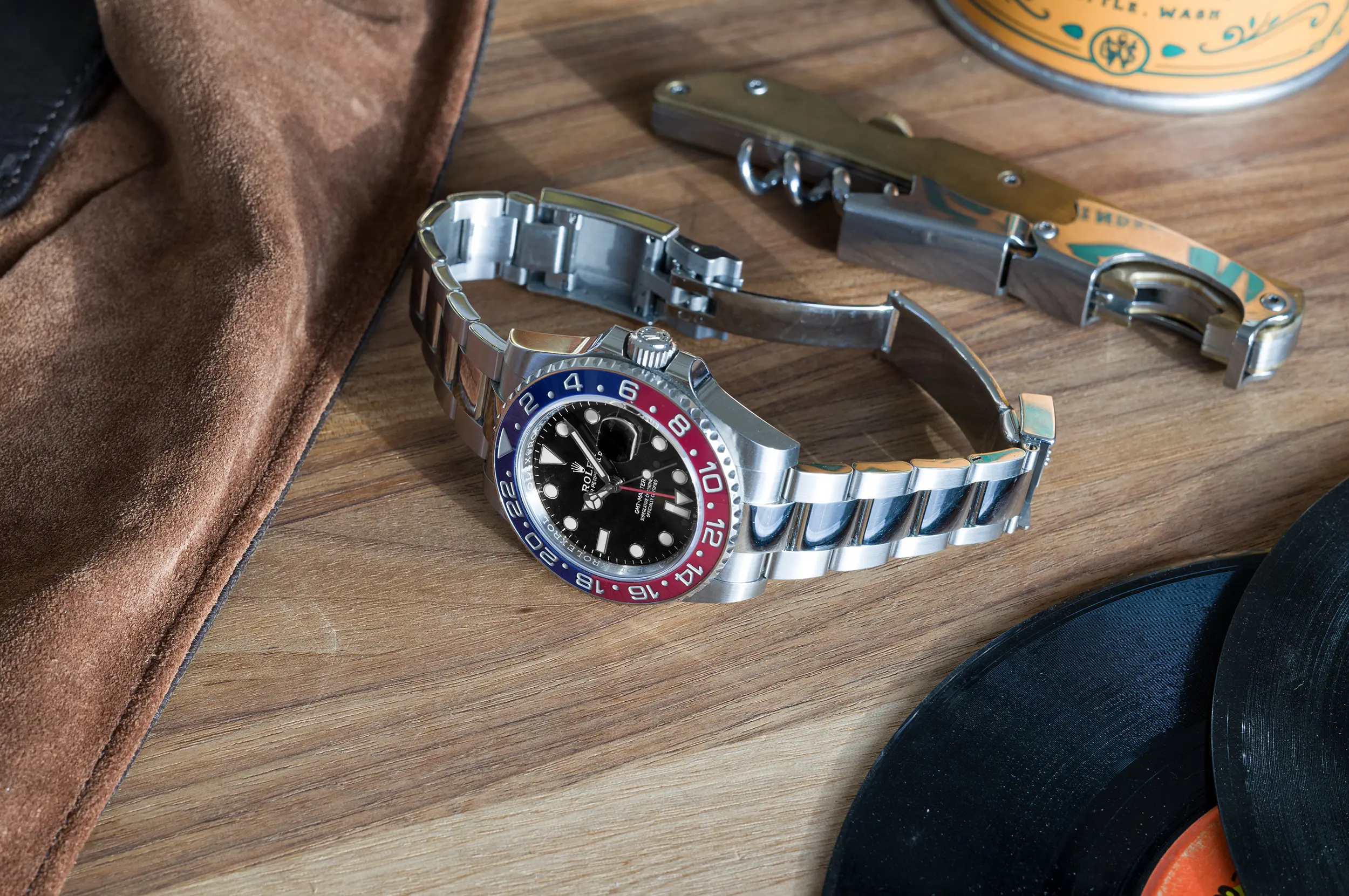
The new case of the GMT had certainly lost the quaint charm of the 16710 on wrist, but it made advancements in overall build quality. This thanks to a new bracelet and clasp, the ceramic bezel, and the caliber 3186 introduced late in the lifespan of the 16710. The caliber 3285 would be introduced into the collection in 2018, and shift the GMT references to a 12xxxx designation in the process. The utilization of the new Chronergy escapement hasn’t gone without its controversy, as it has seemed to introduce a slow leak in amplitude, but that’s a story for another day.
Six years after its release, the 126710BLRO feels a bit more comfortable in its own shoes. The ceramic bezel seems to have settled into the navy/red tones, and all the hullabaloo over the muscle case was likely overblown at the time. There’s no denying the superb comfort factor of the 5 digit references, but the 6 digit cases aren’t all bad, and when taken on their own are quite reasonable in everyday use. Rolex did end up ‘correcting’ the wide lug of the Submariner, to a slightly slimmer aesthetic, but also upsized the case to 41mm in the process. I could see a similar route unfolding for the GMT collection.

In day to day use, the modern GMT is an exceptional companion. It feels robust yet comfortable, retains a high level of legibility, and keeps bang on time. Subjectively, it’s quite handsome, as well. The polished center link and case wall brings a bit more flair to the watch than I might prefer, but they break in nicely with wear. In 2021 Rolex began to offer a steel oyster bracelet for the BLRO, a watch that had been reserved for the jubilee to differentiate it from the white gold reference which could only be had on an oyster style bracelet. To keep that watch unique, a dark blue dial was put in place of the glossy black one.
The choice of bracelet here makes a dramatic difference not only visually, but also in practice. The Oyster bracelet accentuates the broadness of the watch, wearing wide and flat on the wrist. It also feels a bit more ‘old school tool watch’ compared to the jubilee. Conversely, the jubilee bracelet offers a more luxurious look and feel, with a nice taper to the clasp, and plenty of silky articulation between the small links. If you own one, the best choice is having both bracelets to swap between, as they feel like two different watches.
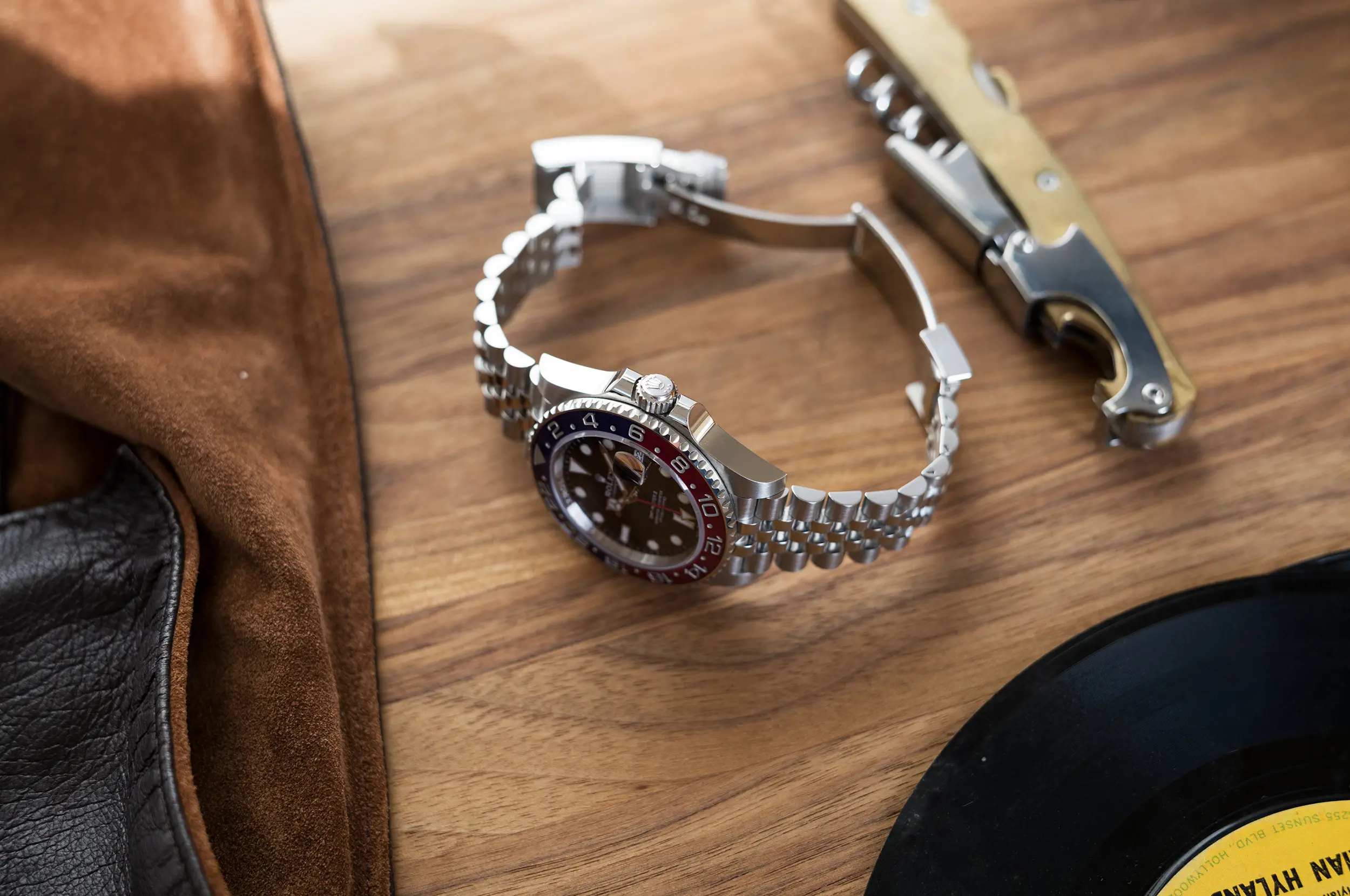
Unfortunately, this reference remains a tough get from authorized retailers the world over, and second hand prices hover around double the MSRP of $10,900. Speculation about the limited units hitting the market due to inconsistent bezel production and a potential discontinuation as a result have taken hold in recent months, though I’d approach any such predictions with a large grain of sand. This is a flagship reference of sorts, and represents plenty of connective tissue to that romantic heritage discussed above.
What’s Next for the BLRO?
Given the current technical limitations of the material, it’s easy to imagine that Rolex is working on some changes. Whether or not that includes a short break in production of this reference remains to be seen, but in the long term I think it’s a safe bet that a steel BLRO will be represented in some fashion. As discussed in the Daytona 126500 review, Rolex does seem to be making a more concerted effort to tie their modern references back to their roots. With that in mind, a slightly revised case and bezel execution feels like a natural next step for the GMT collection as a whole.
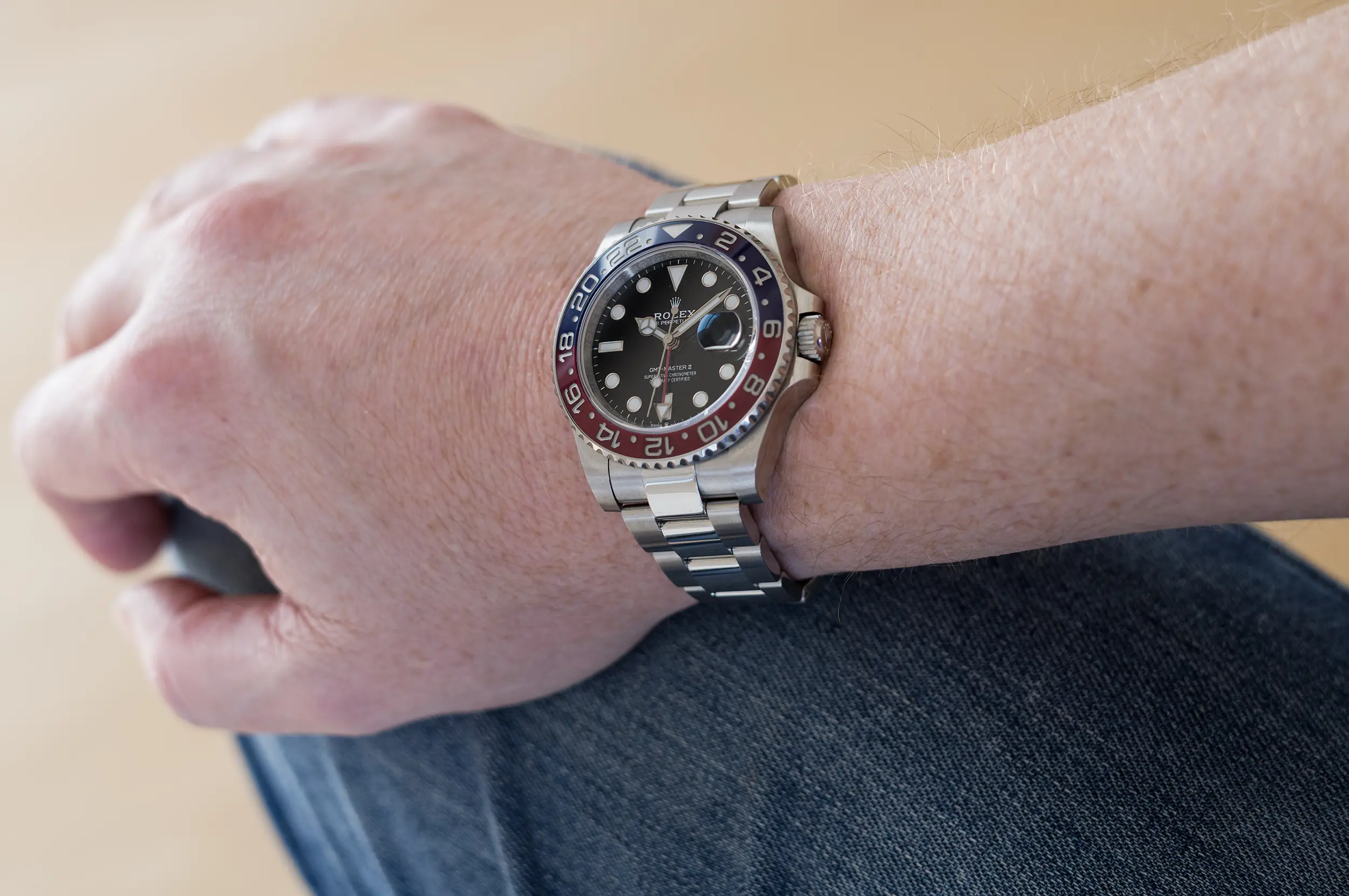
Should Rolex decide to trim some of the fat out of the case, a thinner bezel would likely accompany it. A fully brushed oyster bracelet option would certainly be welcome as well. When the Submariner got its revised case design it grew to 41mm in diameter (though the difference wasn’t so dramatic between the calipers), and the result was a 21mm span between the lugs. This would likely be the same story for the GMT, though if they go this route I’d like to see the chamfer make a return.
Details like matte dials, aluminum bezels, and even different materials like titanium are the realm of Tudor these days, and this is where I believe we have the best odds of seeing a new GMT that conforms to the dimensions we enjoyed in the 16710. It’s the same story with the Submariner. Miss the 14060? The Pelagos 39 or Black Back 54 have you covered. Rolex might be giving a nod to their past, but I don’t expect them to come full circle back to their older ways when Tudor is doing such a great job in that department.
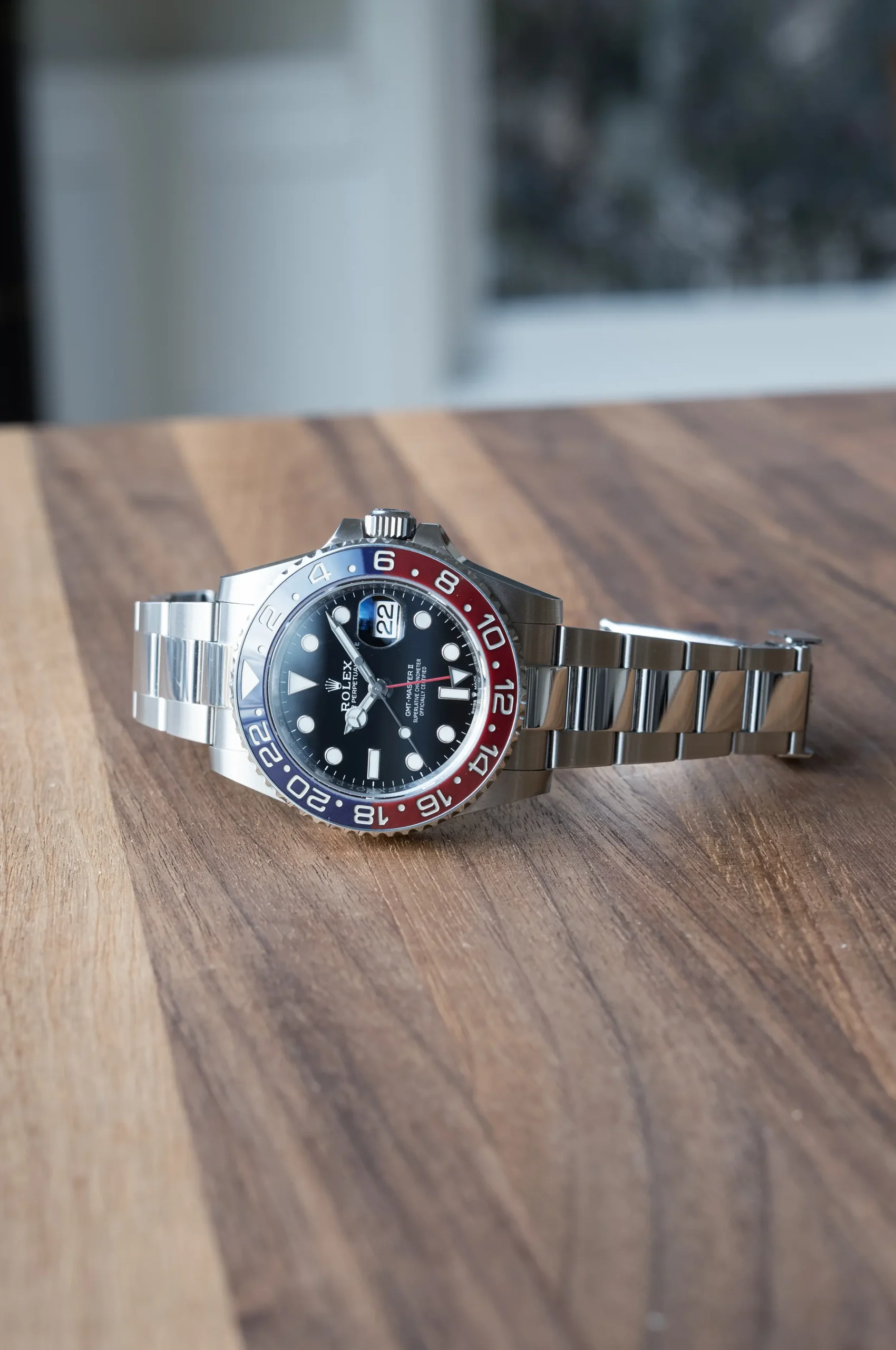
Ultimately, I don’t think the current GMT collection needs a dramatic overhaul. The execution of the BLRO ceramic bezel is the one element that will need to be sorted properly with any subsequent generations. But the imperfections and inconsistencies are what has always made these watches interesting and fun to enthusiasts and collectors. It’s a tie to their past, but likely not in the way they intended. But if it keeps us enjoying the watches without having to fall back to the incessant talk of resale values and current hype status, I see that as a win.
